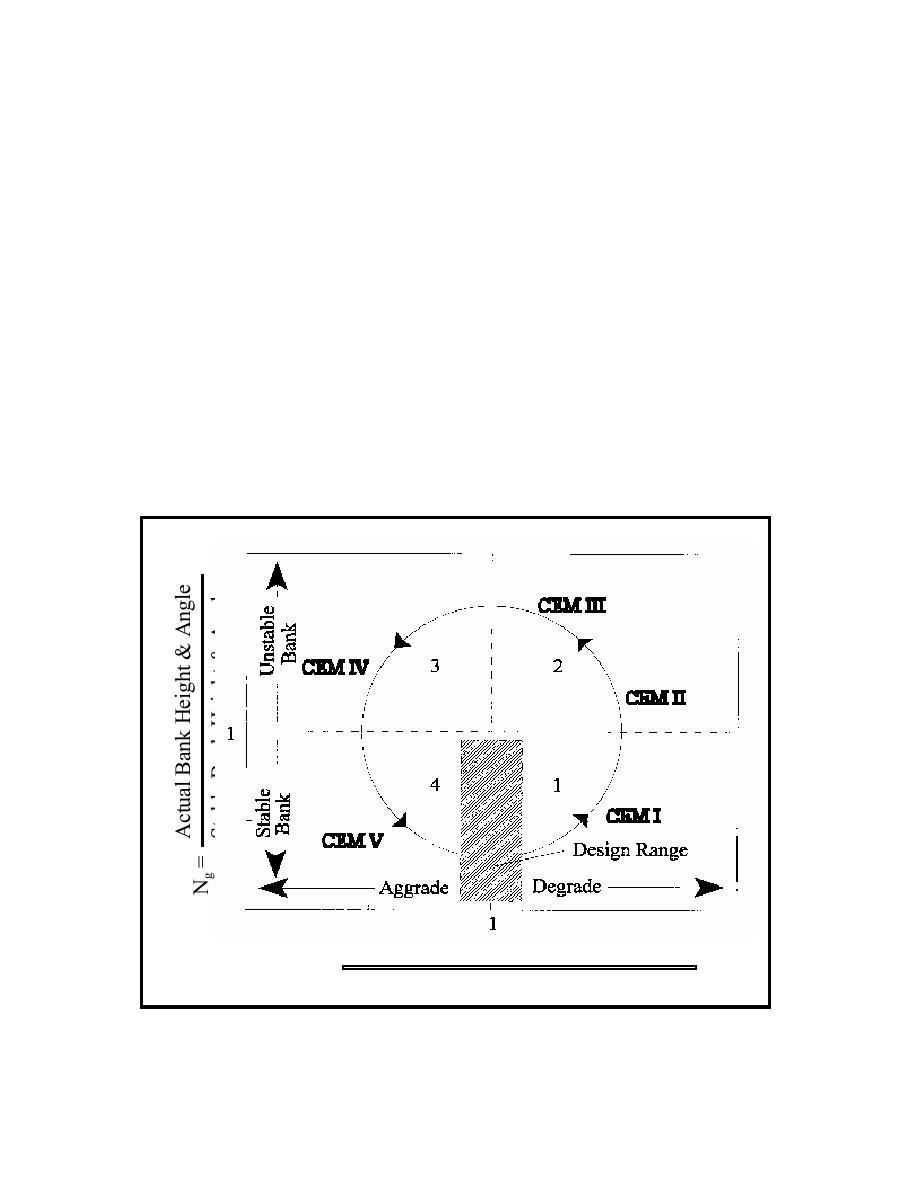
Fundamentals of Fluvial Geomorphology and Channel Processes
aggrade, and if Nh is > 1 it will degrade. Since sediment supply to a channel can change through time, it
is prudent to design rehabilitation measures that will allow for the fluctuations in sediment supply.
In combination, Ng and Nh provide a set of design criteria that define both bank and hydraulic
stability in the channel. Grade-control structures constructed in the channel should induce upstream
deposition of sediment in the bed of the channel. This emulates the natural evolution of the channel.
Reduction in the sediment transport capacity as a result of slope reduction permits deposition of sediment.
This reduces the bank height of the channel. Continued bank erosion will occur only if the failed bank
materials are removed by fluvial processes. The aggradation upstream of the grade-control structure
eventually will result in increasing bank stability.
The dimensionless stability numbers, Ng and Nh, can be related to the channel evolution modes,
as shown in Figure 3.16. As the channel evolves from a state of disequilibrium to a state of dynamic
equilibrium through the five reach types of the Oaklimiter Sequence, the channel condition will progress
through the four stability diagram quadrants in a counter-clockwise direction. Rehabilitation of the channel
should attempt to omit as many of the quadrants as possible to reduce the amount of channel deepening
and widening.
Actual Sediment Capacity
Nh '
Desired Sediment Transport Capacity
Figure 3.16 Comparison of the Channel Evolution Sequence and the Channel Stability
Diagram
47



 Previous Page
Previous Page
